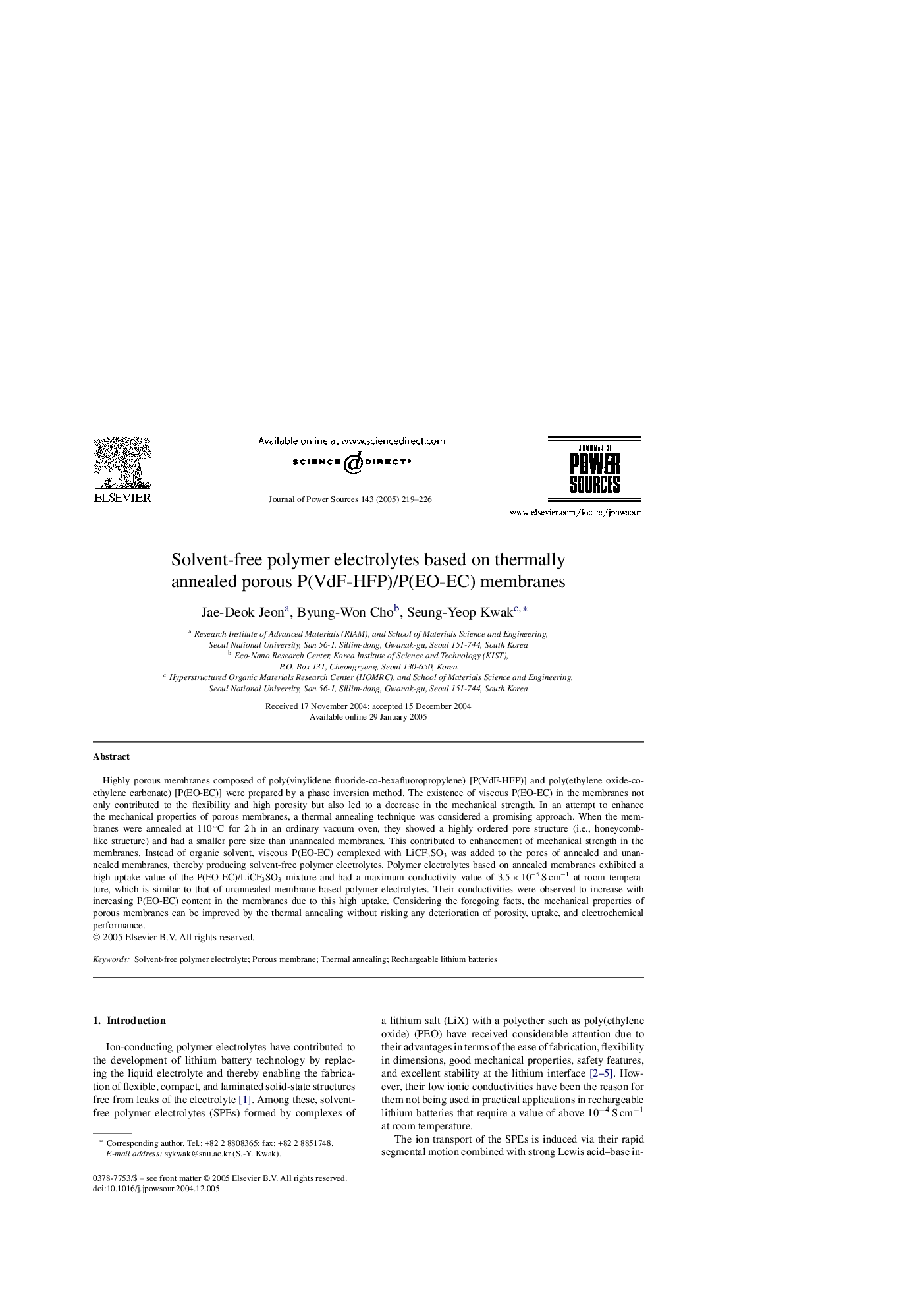| Article ID | Journal | Published Year | Pages | File Type |
|---|---|---|---|---|
| 9760398 | Journal of Power Sources | 2005 | 8 Pages |
Abstract
Highly porous membranes composed of poly(vinylidene fluoride-co-hexafluoropropylene) [P(VdF-HFP)] and poly(ethylene oxide-co-ethylene carbonate) [P(EO-EC)] were prepared by a phase inversion method. The existence of viscous P(EO-EC) in the membranes not only contributed to the flexibility and high porosity but also led to a decrease in the mechanical strength. In an attempt to enhance the mechanical properties of porous membranes, a thermal annealing technique was considered a promising approach. When the membranes were annealed at 110 °C for 2 h in an ordinary vacuum oven, they showed a highly ordered pore structure (i.e., honeycomb-like structure) and had a smaller pore size than unannealed membranes. This contributed to enhancement of mechanical strength in the membranes. Instead of organic solvent, viscous P(EO-EC) complexed with LiCF3SO3 was added to the pores of annealed and unannealed membranes, thereby producing solvent-free polymer electrolytes. Polymer electrolytes based on annealed membranes exhibited a high uptake value of the P(EO-EC)/LiCF3SO3 mixture and had a maximum conductivity value of 3.5 Ã 10â5 S cmâ1 at room temperature, which is similar to that of unannealed membrane-based polymer electrolytes. Their conductivities were observed to increase with increasing P(EO-EC) content in the membranes due to this high uptake. Considering the foregoing facts, the mechanical properties of porous membranes can be improved by the thermal annealing without risking any deterioration of porosity, uptake, and electrochemical performance.
Related Topics
Physical Sciences and Engineering
Chemistry
Electrochemistry
Authors
Jae-Deok Jeon, Byung-Won Cho, Seung-Yeop Kwak,
